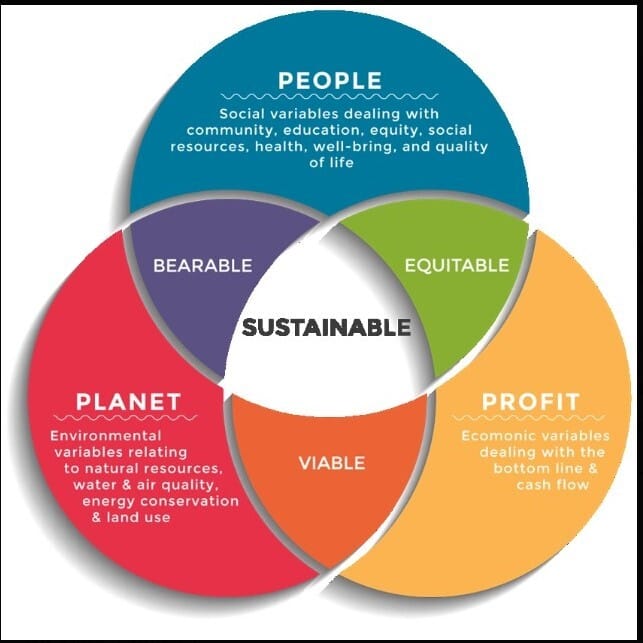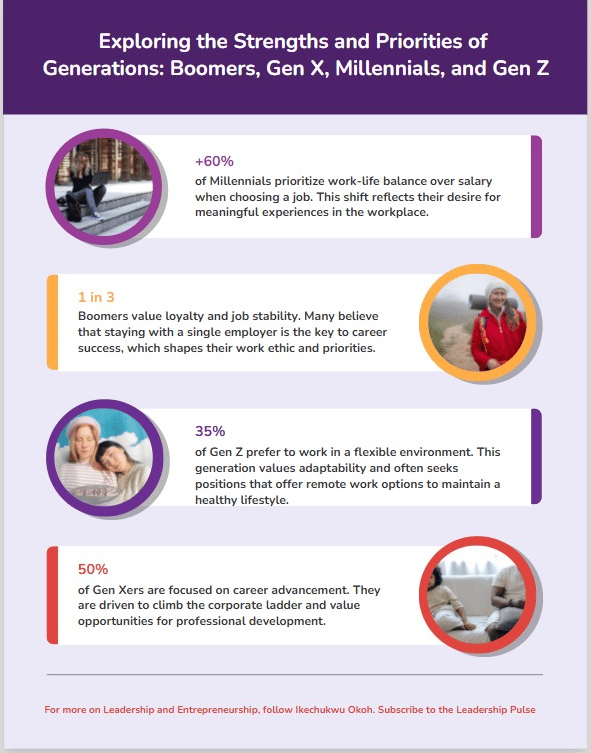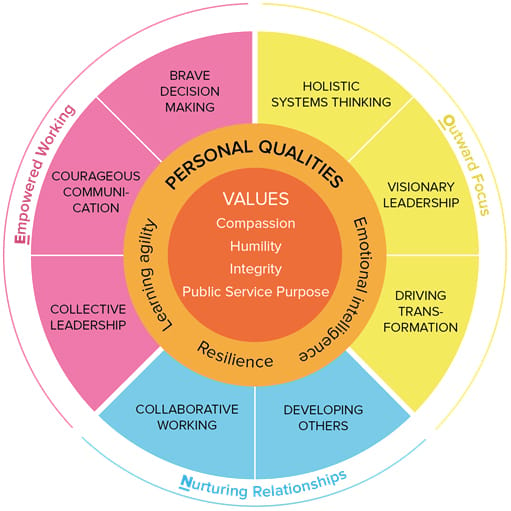- Leadership Pulse
- Posts
- Sustainable Leadership: Balancing Business Goals with Societal Impact
Sustainable Leadership: Balancing Business Goals with Societal Impact
Welcome to Leadership Pulse!
I share weekly actionable strategies and lessons from my experiences as a healthcare leader, entrepreneur, and angel investor.
The Leadership Pulse newsletter will equip you with insights for creating lasting impact, whether navigating leadership challenges, building cohesive teams, or scaling a startup.
This Week at a Glance
Sustainable Leadership: Balancing Business Goals with Societal Impact
In today's business landscape, leadership transcends the traditional focus on profits and quarterly earnings; it now encompasses the imperative to create enterprises that prioritise the well-being of individuals and the environment.
Sustainable leadership is no longer merely an option; it is an ethical obligation and a strategic advantage in a world increasingly shaped by the demands of consumers, employees, and investors for accountability and transparency.
Integrating Sustainability into Business Strategy
Companies such as Unilever have demonstrated that sustainability and profitability can coexist harmoniously.
Their Sustainable Living Plan exemplifies this integration by embedding social and environmental considerations into the core of their operations.
This approach reinforces Unilever's brand identity and drives long-term growth.
By addressing issues such as resource conservation, reducing carbon emissions, and promoting fair labour practices, Unilever has positioned itself as a leader in sustainable business, proving that responsible practices can lead to financial success.
Engaging Stakeholders for Meaningful Change
For sustainability initiatives to have an impact, leaders must actively engage diverse stakeholders, including employees, customers, and local communities.
Patagonia is a notable example. It champions environmental stewardship by encouraging consumers to repair and recycle their products rather than replace them.
This empowerment fosters a strong community ethos around sustainability, demonstrating that consumer choices can drive broader environmental change.
Patagonia actively involves stakeholders in creating a more sustainable future through workshops, social media campaigns, and community partnerships.
Measuring and Reporting Impact with Transparency
Effective, sustainable leadership demands responsible practices, rigorous tracking, and transparent reporting of impacts.
Utilising Environmental, Social, and Governance (ESG) metrics allows organisations to monitor their sustainability efforts objectively and communicate their commitments to stakeholders.
Businesses can showcase their progress, identify areas for improvement, and maintain accountability in their sustainability journeys.
Transparency in reporting builds trust and positions companies as leaders in the transition toward a more sustainable economy.
The principles of sustainable leadership are crucial for modern businesses aiming to thrive in a complex world.
By embedding sustainability into their strategies, actively engaging stakeholders, and transparently measuring their impact, leaders can build organisations that contribute positively to society and the planet, ultimately securing their long-term success.

The Sustainable Leadership Model
Reflection Question: How can you integrate sustainability into your leadership decisions this week?
Receive Honest News Today
Join over 4 million Americans who start their day with 1440 – your daily digest for unbiased, fact-centric news. From politics to sports, we cover it all by analyzing over 100 sources. Our concise, 5-minute read lands in your inbox each morning at no cost. Experience news without the noise; let 1440 help you make up your own mind. Sign up now and invite your friends and family to be part of the informed.
Leading Across Generations: Bridging the Gap Between Boomers and Gen Z
In today’s workplace, many generations coexist, each bringing unique values, work styles, and expectations that shape their approach to work.
For instance, Baby Boomers often emphasise loyalty, a strong work ethic, and the value of experience gained over time.
In contrast, members of Generation Z are driven by a desire for purpose and seek job roles that offer flexibility and align with their values.
Leaders must bridge this generational divide effectively to cultivate a collaborative environment and enhance productivity.
Strategies for Effective Multi-Generational Leadership
1. Foster an Inclusive Culture of Knowledge Sharing
Creating a culture where knowledge flows freely across generations is vital.
Implementing reverse mentorship programs is a great strategy wherein younger employees share their insights on digital trends and technology with senior staff.
In comparison, older employees impart their extensive experience and industry knowledge.
This dynamic enhances collaboration and fosters mutual respect and understanding, breaking down barriers between age groups.
2. Adapt Leadership Styles to Meet Diverse Expectations
Different generations bring varied expectations regarding leadership.
Baby Boomers may prefer structured environments that highlight stability and clear hierarchies, while Millennials and Gen Z often excel in flexible, purpose-driven settings that encourage creativity and innovation.
By adapting leadership styles to accommodate these preferences, leaders can strike a balance that keeps all generations engaged and motivated, thus promoting a harmonious workplace atmosphere.
3. Leverage Cross-Generational Strengths
Harnessing the strengths of diverse generations can significantly benefit organisational effectiveness.
By forming cross-generational teams, businesses can blend the wisdom and experience of older employees with the fresh perspectives and technological savvy of younger workers.
This cooperative approach can lead to innovative solutions, improved problem-solving, and enhanced decision-making processes, ultimately driving the organisation forward.
Leaders can create a thriving workplace that respects and celebrates generational diversity by prioritising inclusivity and flexibility while recognising each generation.

Reflection Question: How can you create stronger collaboration between different generations in your team?
The Intersection of Public Health and Policy:
Health and policy are intricately connected, creating ripple effects across various industries and organisational structures.
Leaders must remain informed and proactive in an era of rapidly changing health landscapes—whether navigating intricate healthcare regulations, implementing robust workplace wellness programs, or responding to global health emergencies.
Key Leadership Roles in Public Health & Policy
1. Advocate for Policies That Support Health Equity
Organisations, whether large corporations or small businesses, have a significant influence in advocating for policies that can enhance public health outcomes.
This includes championing initiatives like paid sick leave, which supports workers during illness and promotes community health by preventing the spread of disease.
Additionally, pushing for improved mental health resources demonstrates a commitment to holistic well-being, addressing both the physical and psychological aspects of health among populations.
2. Integrate Public Health into Organizational Strategy
Firms that prioritise their employee” health” and wellness see tangible benefits.
Google is a prime example; the tech giant offers comprehensive health programs encouraging a wellness culture.
This investment leads to higher employee satisfaction, increased productivity, and better engagement rates.
By weaving public health principles into their organisational strategies, companies can foster a healthier and more motivated workforce, ultimately driving long-term success.
3. Collaborate with Policymakers and Industry Leaders
Effective partnerships between the public and private sectors are essential for driving meaningful change in public health.
The COVID-19 pandemic underscored the importance of these collaborations—showing how crucial they are for initiatives such as vaccine distribution and workplace safety measures.
Businesses and government entities can develop and execute strategies that protect public health and facilitate economic recovery and sustainability by working together.
As the relationship between public health and policy continues to evolve, organisational leaders must embrace their roles as advocates, strategists, and collaborators to create environments that support healthy communities and workforces.

Reflection Question: What role can you play in advocating for policies that improve public health and workplace well-being?
Sustainable leadership, multi-generational collaboration, and public health awareness are key components of modern leadership. Authentic leadership is about creating lasting impact within and beyond your organisation.
Key Takeaways
Sustainable Leadership: Profit and purpose coexist when leaders integrate long-term sustainability into their business strategies.
Leading Across Generations: Bridging generational differences fosters innovation and stronger team dynamics.
Public Health & Policy: Leaders must stay engaged in shaping policies that affect the well-being of their workforce and communities.
I wish you a fabulous week ahead
Please stay connected with me:
Ikechukwu Okoh
Founder of Leadership Pulse
P.S. Feel free to share this newsletter with a colleague or peer who could benefit from these insights.
Partner with Me for Impact:
Executive Coaching for Healthcare Leaders:
I offer tailored strategies to help you lead effectively in uncertain environments.Healthcare Consulting Services:
I provide insights on enhancing operational efficiency, regulatory compliance, and patient care outcomes.Advisory for Healthcare Startups:
I support you with scaling strategies, investor pitching, and navigating healthcare regulations.
Reply to this email or find me on LinkedIn, and let’s discuss how I can help you achieve your goals.
❝
Subscribe to the Leadership Pulse newsletter. It is amazing.- Tolu Ekwe.


Reply